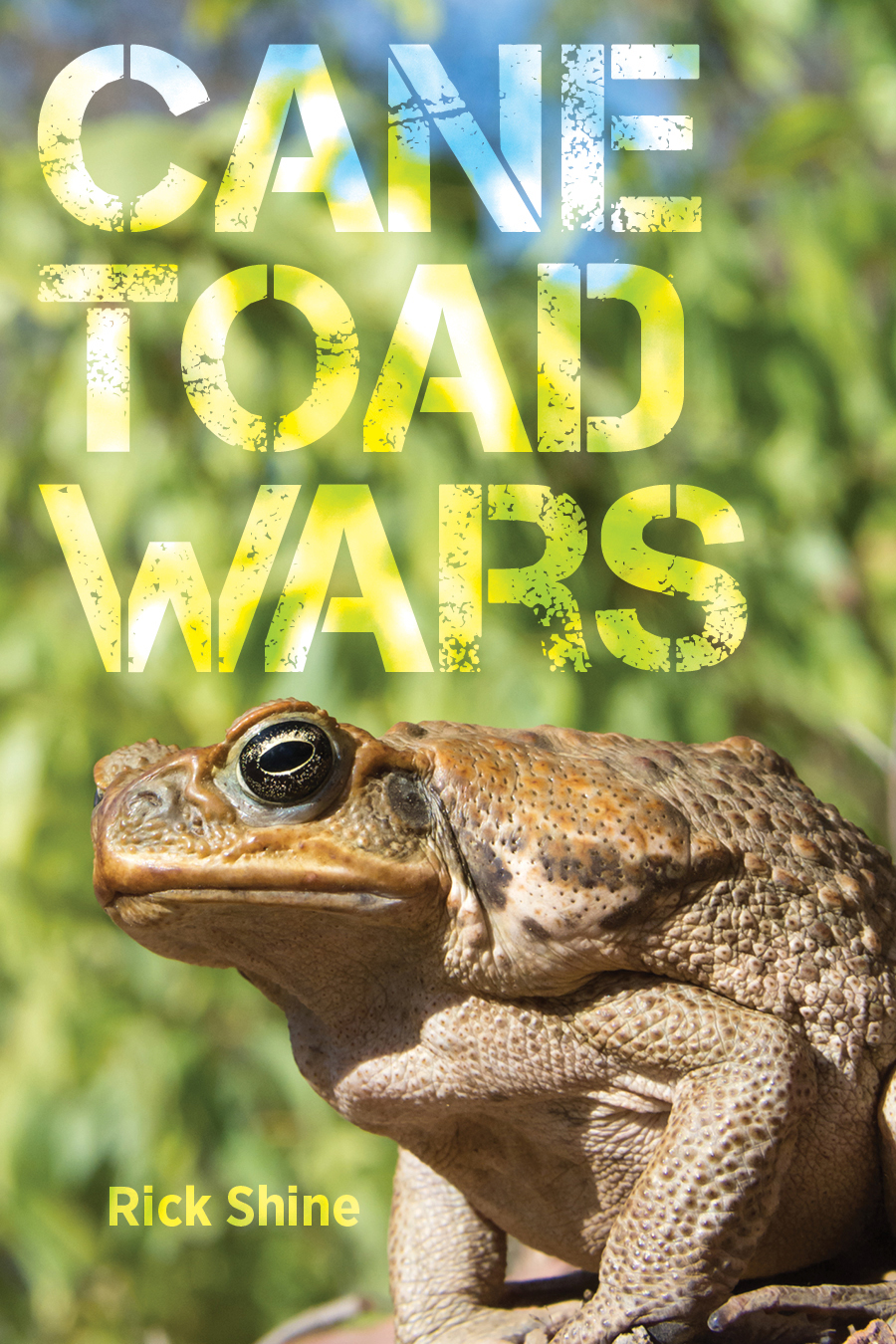Rick and Terri Shine
This page is about people who are doing scientific research on cane toads in the Northern Territory, Queensland and New South Wales, and transmitting information about our work to the public. We are part of TEAM BUFO.
Rick Shine is a Professor of Biology at Macquarie University, in Sydney. He was employed for most of his career at the University of Sydney, and was able to devote his time to research (with a lot less undergrad teaching and administration) through Fellowships from the Australian Research Council. The first of those was a Federation Fellowship (2006 to 2010, so covering the first five years after cane toads arrived at our main study site near Darwin). Rick was then awarded a Laureate Fellowship, again from the ARC, to run until 2018. After that finished, he left Sydney University and transferred to nearby Macquarie University.
With the backing from those ARC Fellowships, Rick created TEAM BUFO in 2005, and he still heads the group.
Rick has been passionate about wildlife, especially
reptiles and amphibians, since he was a small child in Brisbane. He
turned that passion into a career, doing an undergraduate degree in
science at the Australian National University (in Canberra), then a Ph.D
at the University of New England (in Armidale). Then, after a few
years’ postdoctoral work in the USA (where he met Terri), they both
returned to Sydney in 1978.
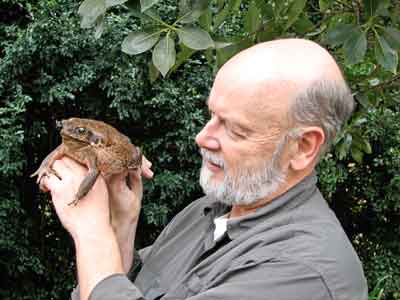
Rick Shine (on the right) holding a cane toad
Rick has conducted research all over the world, mostly on the ecology of snakes (which was the subject of his Ph.D). He’s published more than 1000 papers, and received many national and international awards for his research. For example, he's the only scientist who has received three Eureka Awards, for three different fields (research, mentoring, and communicating science to the public). In 2016 he received the two top awards in Australian science: NSW Scientist of the Year, and Prime Minister's Prize for Science.
The “official” university website has all the gory details if you’re interested.
Rick Shine's University of Sydney web page
One place that became more and more important for Rick’s research was a
small dam on the Adelaide River floodplain about 60 km east of Darwin,
in the Northern Territory. Rick initially started working in the
Territory in 1981, based at Jabiru in Kakadu National Park, looking at
filesnakes, goannas and frillneck lizards. He soon shifted his focus to
Fogg Dam, because it had terrific numbers of snakes and some friendly
locals at the Coastal Plains Research Station, who helped out with
advice and accommodation. Rick started ecological studies on the local
pythons, and soon got funding from the Australian Research Council (ARC)
to expand the study. He employed Thomas Madsen as a post-doctoral
fellow to collaborate on his research. Tom still works on snakes and
lizards at Fogg Dam but nowadays is based at Deakin University. More funding from the ARC brought Greg Brown into the
system on more snake studies, and the project just kept getting bigger
and bigger.
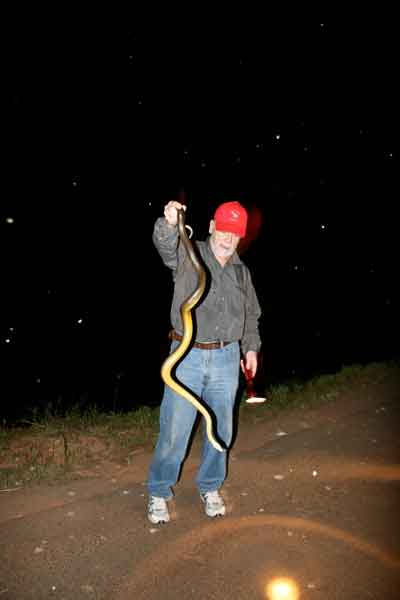
Rick on the Fogg Dam wall with a Water Python
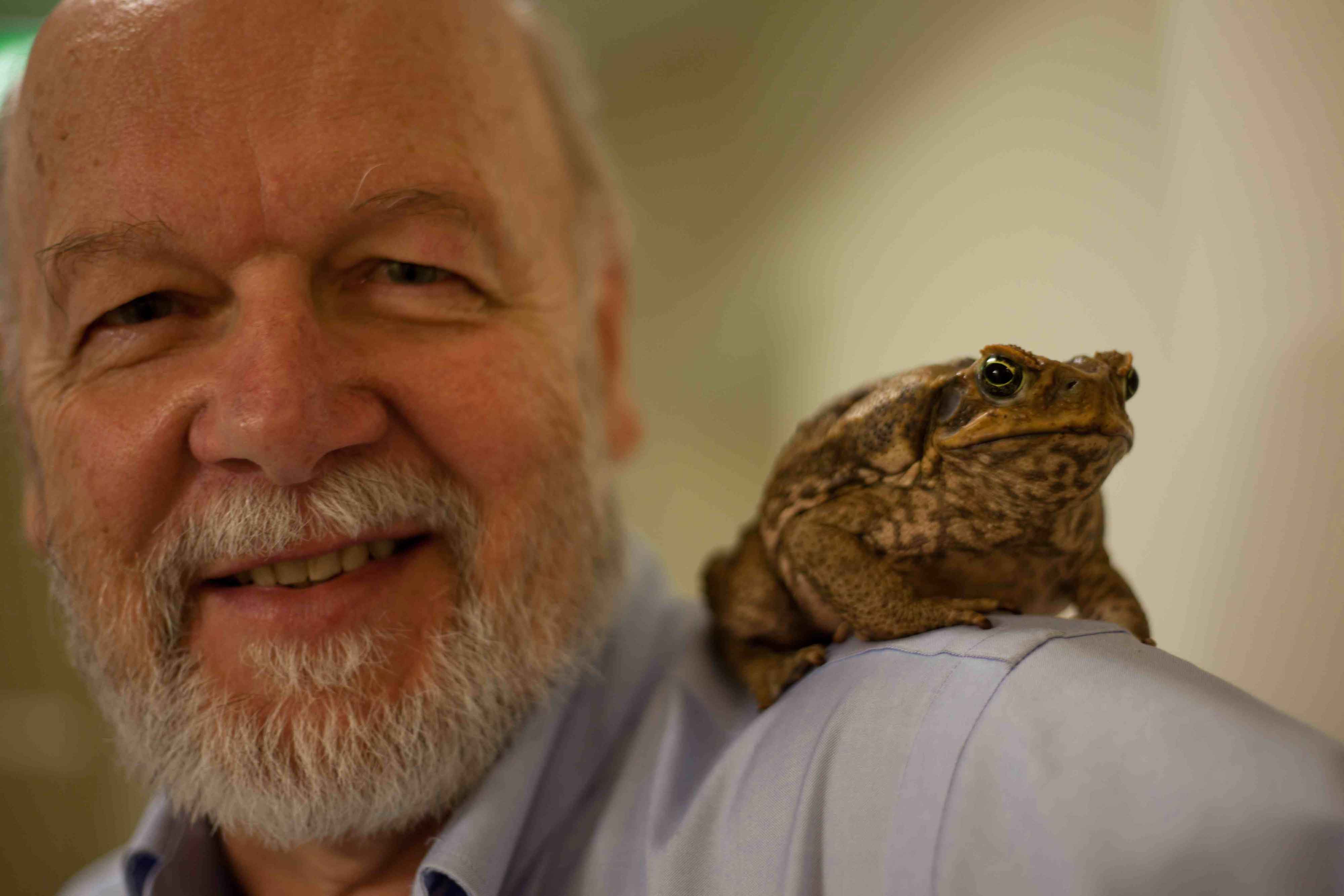
Rick in the lab with one of the cane toads that we use for television appearances. Photo by Terri Shine.
And then, cane toads appeared on our research horizons. The toad invasion front had been travelling from Queensland towards Fogg Dam for 70 years, and in 2004 it was just at our doorstep. Clearly, this was a unique opportunity for Australians to find out what cane toads actually do at the invasion front, and what effects they have.
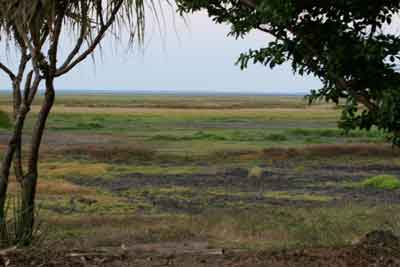
Fogg Dam - flood plain
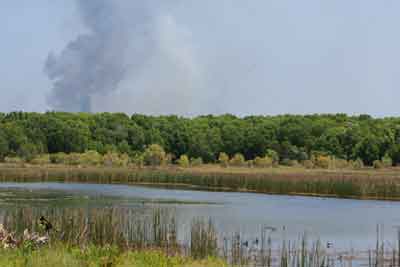
Fogg Dam
Remarkably (given all the public money and private effort that has
been devoted to toads in Australia), we really had very little detailed
information on these animals. But with their impending arrival we had
the chance to get that information at Fogg Dam – one of the most
intensively-studied and thus best-understood chunks of tropical real
estate in Australia, and probably even worldwide (tropical ecosystems
have been ignored, compared to those in cooler climates closer to the
main universities in North America and northern Europe).
Rick was awarded a Federation Fellowship from the Australian Research
Council (ARC), beginning in 2006. The funds from the Fellowship allowed
a rapid expansion of our activities, at just the right time – shortly
before the toads were due to arrive.
The Australian Research Council is a federal government agency that supports scientific research.
The main way we communicate the results of our research is to publish
scientific papers in journals. These don't look much like the glossy
magazines most people are used to reading - they are pretty drab and are
mostly read only by professionals who conduct research in the field,
and by up-and-coming research students. We also give talks about our
research results at scientific conferences - again, to other scientists.
There's nothing confidential about these results, and lots of our
papers are available free from our “official” website.
Rick's laboratory web site has lots of detailed information.
Unfortunately, scientific papers aren't too easy to read. Most public
statements in the media just involve people offering their opinions
about things, without having to produce any evidence. Scientific papers
are very different. They are checked by expert reviewers before being
accepted for publication, and are rejected unless the paper provides all
the evidence to support its conclusions. That's a really tough process
- everything we say in a paper is checked carefully by at least two
international experts, and the top journals reject about 90 to 95% of
all papers that are submitted to them! It means that to be published in
a scientific journal, a paper really has to provide reliable evidence
to back up everything it says. So, the typical scientific paper has lots
of numbers and lots of statistics. This means it's very reliable as a
source of evidence - much more than anything you will hear in the media,
which might just be somebody's guess or opinion, based on no real
evidence at all - but it makes most scientific papers pretty difficult
to read.
So, we thought that it would be helpful to provide a more user-friendly
version, so that people who don’t have formal scientific training can
understand a bit more about cane toads, their effects on the native
fauna, and what we can do to fight the invader. So that’s what this
website aims to do.
If you want more detail about the scientific
evidence behind the information we provide on this website, then by all
means pop across to Rick's laboratory website (see the link above) where
you can see all of the papers listed, with quick summaries of each.
Just email us (see the Contacts page) for the actual paper - with all
the evidence - if you want to follow things up in more detail.
This website is produced by Terri Shine, whose main link to the strange
and wonderful world of cane toads comes from being married to Rick Shine
for the last 40 or so years.
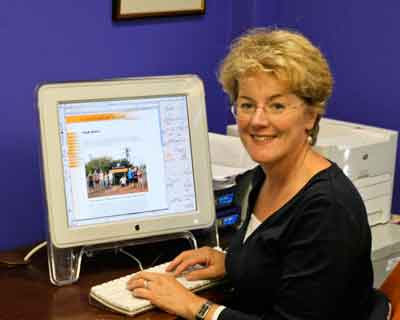
Terri Shine
For the full story about the cane toad invasion of Australia, and what we can do about it, read Rick’s book “Cane Toad Wars” (published by University of California Press, 2018). The book is written for the general public, not for scientists, and is aimed at a wide audience. The book can be purchased through online bookstores like Amazon, or you can buy a copy through your local bookstore.
Go to Fogg Dam
to Team Bufo at Fogg Dam
or to Home Page
